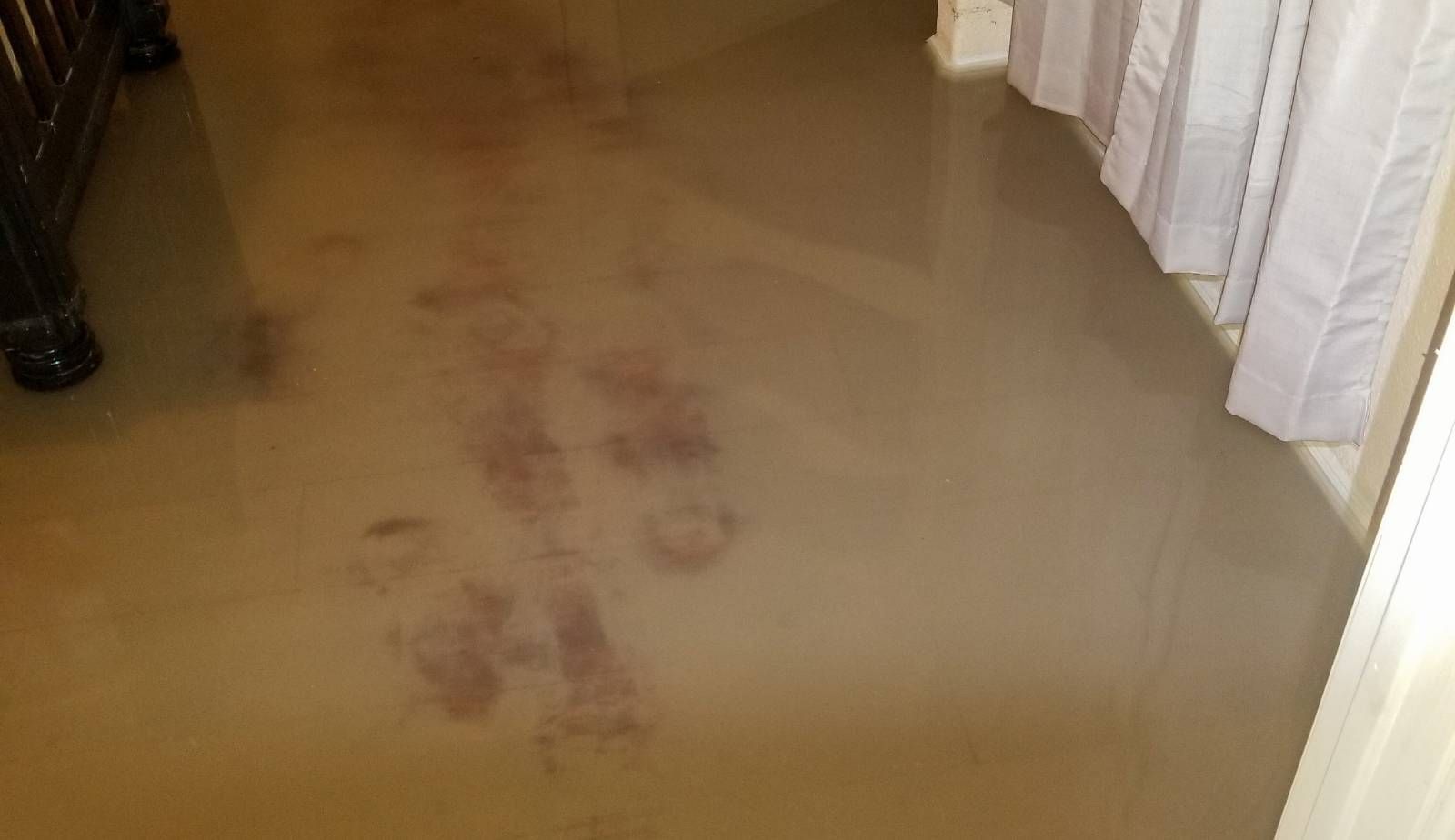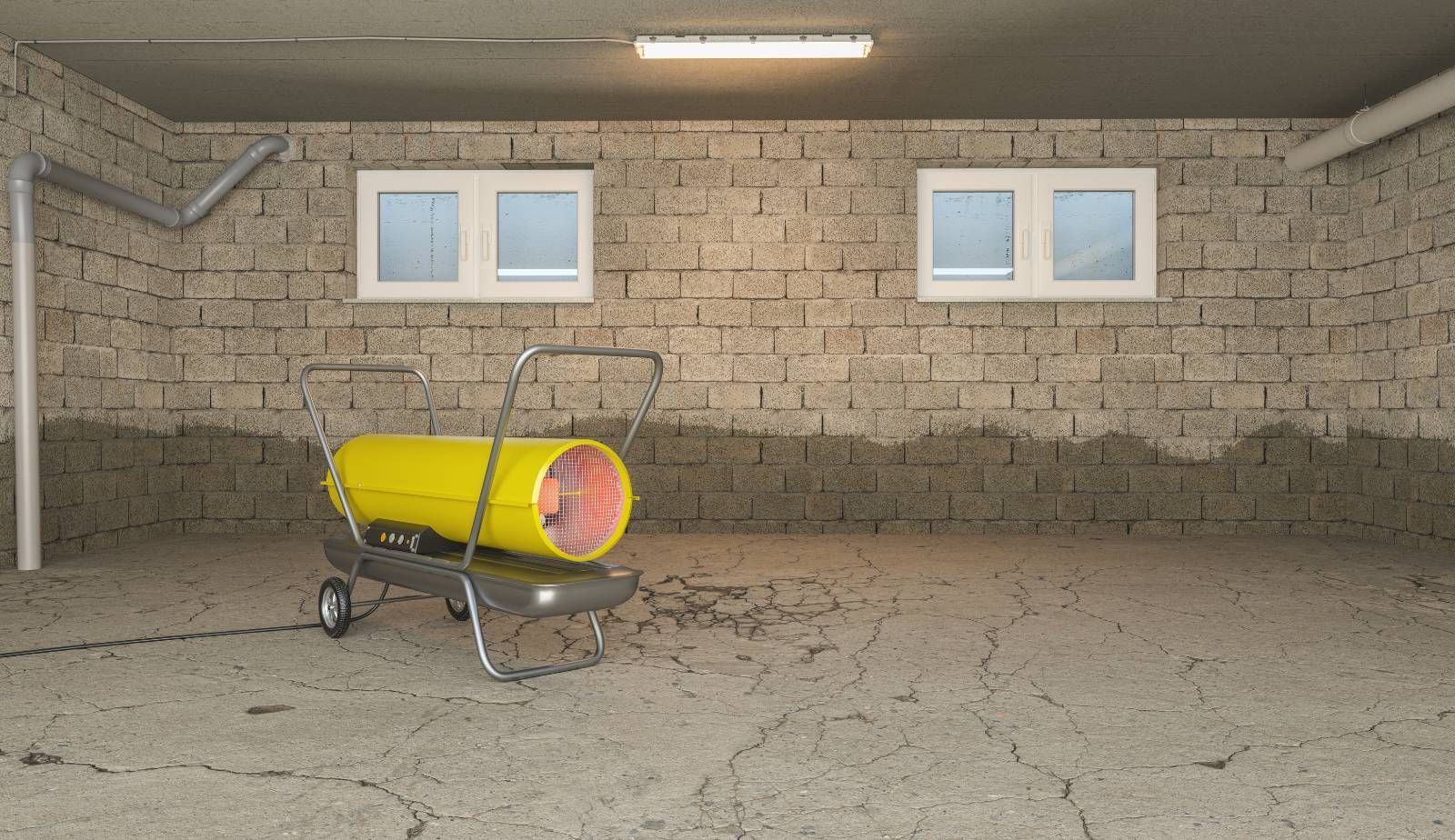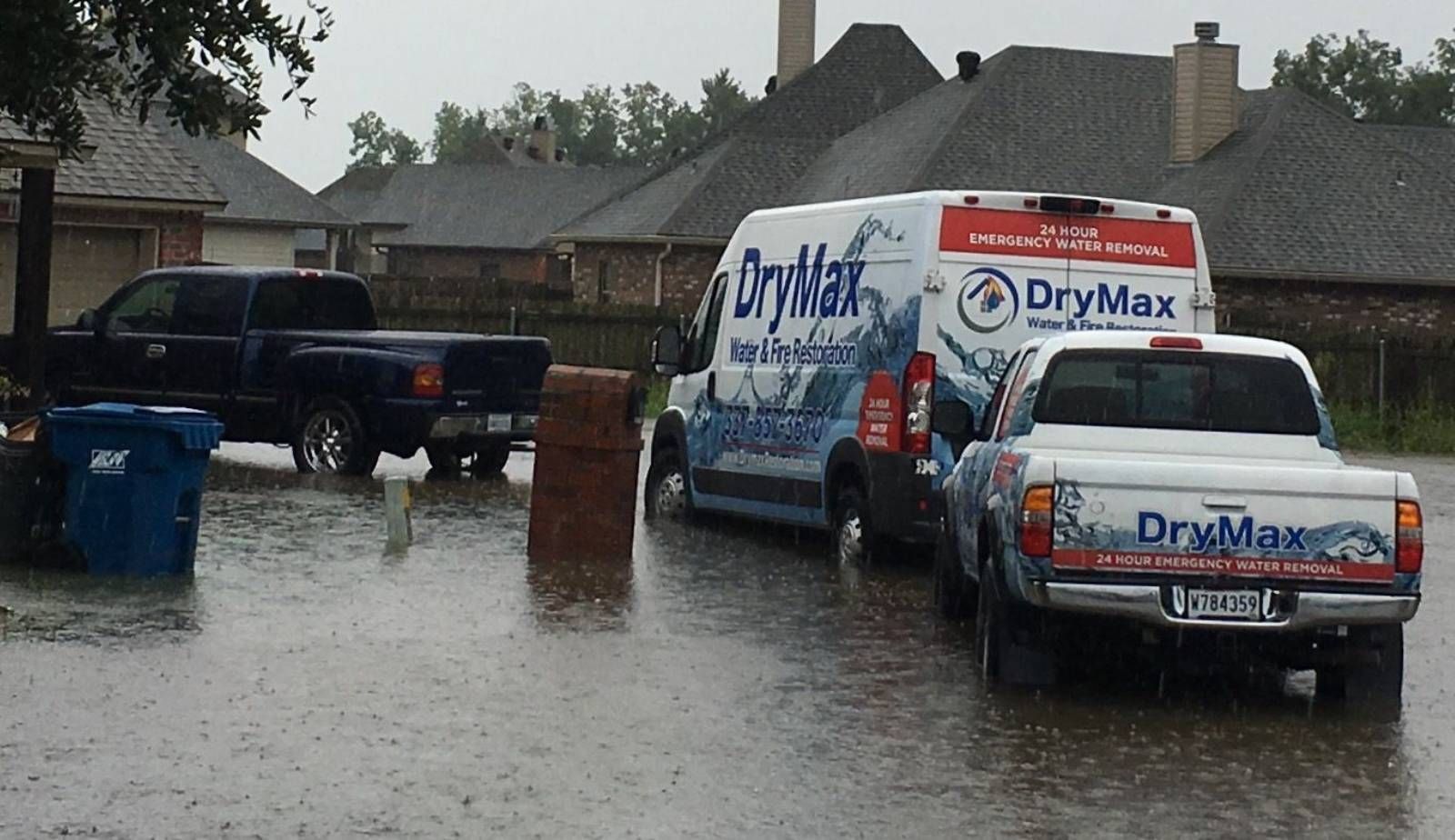The Hidden Dangers of Standing Water in Your Home: Health Risks, Structural Damage, and Rapid Remediation Strategies from Drymax
Standing water in a home poses significant hidden dangers that can affect both the health of its occupants and the structural integrity of the property. Prolonged exposure to stagnant water can lead to mold and mildew growth, posing serious health concerns such as respiratory issues and allergic reactions. Furthermore, water damage can weaken foundations, rot wooden structures, and corrode metal supports, threatening the stability of the entire home.
Homeowners must prioritize rapid response and remediation to mitigate these risks. Regular inspections of crawl spaces, basements, and other areas prone to water accumulation are essential in identifying standing water early. Utilizing services like Drymax can aid in effective water removal and prevention strategies, ensuring a healthier living environment.
Acknowledging the seriousness of standing water issues is crucial for every homeowner. Timely action not only protects against potential health hazards but also preserves property investment by preventing costly structural repairs. The importance of addressing these dangers cannot be overstated, as awareness and proactive measures can ensure a safe and stable home.
Understanding the Threat of Standing Water
Standing water poses significant risks to both health and structural integrity within a home. It can arise from various sources, and understanding these elements is crucial for effective prevention and remediation.
What Constitutes Standing Water
Standing water refers to stagnant or pooled water that does not drain away. This condition often occurs after heavy rains, flooding, or from broken plumbing. It can accumulate in various areas such as basements, crawl spaces, and around foundations.
Key characteristics of standing water include:
- Duration: Water that remains for more than 24 hours is particularly concerning.
- Stagnation: Lack of movement allows for bacteria and mold growth.
- Volume: Even small puddles can lead to larger issues if left unattended.
The presence of standing water creates an environment ripe for health risks, including respiratory problems and infections from mold exposure.
Sources of Standing Water in Homes
Multiple sources can contribute to the development of standing water in a home. Common causes include:
- Leaks: Broken pipes and faulty plumbing fixtures can lead to water accumulation.
- Flooding: Severe weather events can overflow drainage systems, adding excess water to living spaces.
- Poor Drainage: Inadequate landscaping or drainage systems can direct water towards foundations.
Moisture management is essential to prevent standing water. Homeowners should regularly inspect plumbing and drainage systems, especially after heavy rain or snowmelt, to mitigate risks associated with stagnant water. Taking proactive measures can safeguard both health and structural integrity.
Health Risks Associated With Standing Water
Standing water in a home can create significant health hazards. It serves as a breeding ground for bacteria and viruses, poses risks of mold and mildew growth, and can contribute to respiratory problems and allergic reactions. Addressing these threats promptly is essential for maintaining a safe living environment.
Spread of Bacteria and Viruses
Standing water can harbor various bacteria and viruses, leading to serious health risks. Mosquito-borne diseases are a major concern. For instance, stagnant water can breed mosquitoes that transmit illnesses such as West Nile virus, dengue fever, and Zika virus.
Additionally, waterlogged areas may contain pathogens like Legionella, which can cause severe respiratory infections. Contact with contaminated water can result in gastrointestinal infections and skin irritations, particularly when individuals wade through or are otherwise exposed to affected areas.
Keeping water stagnation in check is vital to reducing these health risks.

Mold and Mildew-Related Illnesses
Mold and mildew thrive in moist environments, making standing water an ideal location for growth. These fungi release spores into the air, which can trigger allergic reactions and respiratory problems. Common symptoms include coughing, sneezing, and skin rashes.
Mold exposure may also exacerbate existing allergies and asthma conditions. In severe cases, individuals with compromised immune systems could develop more serious health issues. Addressing mold promptly requires a thorough inspection and specialized remediation to prevent the spread and minimize health implications.
Maintaining proper airflow and ventilation can help control moisture levels and limit mold growth.
Respiratory Problems and Allergic Reactions
Exposure to mold spores and bacteria from standing water can lead to a range of respiratory problems. Many individuals experience allergies manifesting as nasal congestion, coughing, or wheezing.
In some cases, prolonged exposure may result in chronic respiratory conditions. Children and those with pre-existing health issues are particularly vulnerable to these effects.
To mitigate these risks, it is crucial for homeowners to promptly address any standing water issues, ensuring areas are dried and cleaned effectively. Enhanced air filtration and regular maintenance of HVAC systems can further support respiratory health.
Structural Damage and Stability Concerns
Standing water can lead to significant structural damage and compromise the stability of a home. It affects various materials and parts of the structure, creating risks that are critical to address promptly.
Impact on Wooden Structures and Foundations
Wooden structures are particularly vulnerable to the effects of standing water. Prolonged exposure leads to rot and decay, impacting decks, fences, and wooden siding.
Key Issues:
- Rotting: Wood can lose its strength, resulting in cracks and splintering.
- Pests: Standing water attracts insects like termites, which further weaken the wood.
Additionally, the foundation is at risk. When moisture seeps into the soil around the foundation, it contributes to foundation erosion. This erosion can cause uneven settling, leading to additional cracks and structural weakness.
Risks to Overall Structural Integrity
The presence of stagnant water can compromise a home's structural integrity. Water seepage can erode foundations and corrode metal components, which poses risks to the entire structure.
Consequences include:
- Foundation Cracks: As the foundation settles unevenly, cracks may emerge, further destabilizing the structure.
- Foundation Collapse: In severe cases, ongoing erosion can result in total foundation failure, leading to extensive repair costs and safety hazards.
Maintaining a dry environment is essential to preserving the home’s structural integrity. Regular inspections and prompt remediation efforts are crucial in preventing these serious issues.
Water Damage and Its Long-Term Effects
Water damage in homes can lead to serious health risks and structural issues if not addressed promptly. Awareness of the early signs, preventive measures, and long-term consequences is crucial for property owners to maintain safety and stability.
Early Signs of Water Damage
Recognizing the early signs of water damage can prevent further complications. Common indicators include:
- Discoloration: Yellow or brown spots on walls and ceilings often suggest water buildup.
- Peeling Paint: This can indicate moisture beneath the surface, leading to potential mold growth.
- Unpleasant Odors: Musty smells often point to hidden mold problems resulting from excess moisture.
Inspection of plumbing fixtures, utility lines, and roof conditions can also reveal leaks before they escalate.
Preventing Rot and Decay
Preventing rot and decay is essential for maintaining a home's structural integrity. Regular maintenance should include:
- Gutter Cleaning: Keep gutters clear of debris to prevent water overflow, which can erode foundations.
- Proper Grading: Ensure the landscape directs water away from the house to avoid pooling.
- Insulation Inspection: Properly insulated areas prevent condensation that can lead to mold and decay.
Property owners should also proactively address any standing water situations immediately.
Assessing Long-Term Consequences
If left unchecked, water damage can have far-reaching effects. Over time, potential consequences may include:
- Structural Weakening: Prolonged moisture can cause cracks in foundations and framing, compromising the overall stability of the building.
- Mold Growth: Mold can proliferate within 24 to 48 hours of water exposure, posing health risks to residents.
- Pest Infestation: Standing water can attract pests, which may worsen damage and lead to increased repair costs.
Flood insurance may become necessary for homeowners facing a higher risk due to prolonged water exposure or flooding incidents. Regular inspections and maintenance are key to mitigating such long-term dangers.

Addressing Hidden Risks
Standing water poses several hidden risks that can compromise both health and structural integrity. Identifying these risks is crucial for effective remediation and prevention.
Identifying Hidden Moisture
Hidden moisture can lead to severe problems, including mold growth and decay. It often accumulates in areas like crawl spaces, behind walls, and beneath flooring. Regular inspections are vital to locate such moisture, as it may not always be visible.
Using moisture meters can help assess humidity levels in walls and floors. Additionally, signs like discoloration or a musty odor can indicate moisture issues. Addressing these hidden areas quickly can prevent further damage.
Hidden Pests and Insects
Standing water creates an ideal breeding ground for pests such as mosquitoes, which may pose health risks due to disease transmission. Rodents, including mice and rats, are attracted to moist environments and can introduce additional health concerns.
Termites are particularly dangerous as they thrive on wood softened by moisture. They can silently compromise the structural integrity of a home. Utilizing traps and professional pest control services is essential for effective pest management in these scenarios.
Invisible Structural Damages
Moisture buildup can result in significant structural damages that are often not immediately apparent. It can weaken foundations, leading to potential safety concerns. Water seepage is known to erode concrete and rust metal supports, jeopardizing the stability of the entire building.
Regular assessments by restoration services can identify these vulnerabilities early. Homeowners should prioritize repairs for any visible damage to prevent more extensive issues down the line. Timely intervention is crucial for maintaining the safety and longevity of the property.
Preventative Measures and Rapid Response
Addressing standing water requires a proactive approach. Effective prevention strategies can reduce the risk of health issues and structural damage, while a rapid response is crucial for minimizing impact.
Strategies for Moisture Prevention
Implementing key strategies can significantly decrease moisture accumulation in a home. Proper drainage is essential. Homeowners should ensure that gutters and downspouts are well-maintained to direct water away from the foundation.
Waterproofing techniques can protect basements and crawl spaces. Using sealants on walls and floors can prevent water seepage.
Ventilation is another critical factor. Proper airflow can reduce humidity levels, minimizing conditions conducive to mold growth. Utilizing exhaust fans in kitchens and bathrooms helps maintain optimal air quality.
Lastly, a sump pump can serve as a proactive measure in flood-prone areas. Regular checks and maintenance are imperative to ensure its effective operation.
Emergency Response to Standing Water
Timely action is vital when standing water is discovered. The first step is to ensure safety by turning off electrical appliances in affected areas. Next, they should remove any valuable items from the water to prevent additional damage.
Utilizing a wet/dry vacuum is an effective method for extracting water quickly. After removing standing water, addressing the cause is crucial. Homeowners should identify leaks and make necessary repairs promptly.
In some cases, hiring a professional restoration service may be necessary. They can provide expertise in assessing damage and ensuring thorough drying. This reduces the risk of mold and other complications.
Regular Inspections and Maintenance Guidelines
Regular inspections are essential to maintain a home’s integrity and prevent moisture problems. Homeowners should conduct thorough checks at least twice a year, focusing on areas prone to water accumulation, such as basements and attics.
They should pay special attention to drainage systems and test sump pumps during heavy rainfall. Inspecting roofs for damage and maintaining gutters helps to ensure proper water flow.
Routine maintenance of appliances like dishwashers and washing machines is also important. Leaks can develop over time, causing hidden issues. Responding quickly to signs of water damage is critical to a healthy living environment, ensuring the home remains safe.

Professional Remediation and Restoration
Addressing standing water in a home requires immediate and professional intervention to prevent health risks and structural damage. Engaging skilled restoration services guarantees the safety and well-being of occupants while ensuring the integrity of the property is restored effectively.
Choosing the Right Restoration Service
When selecting a water damage restoration service, it is essential to consider several factors. First, look for providers with certifications from institutions such as the Institute of Inspection, Cleaning, and Restoration Certification (IICRC). Trained technicians are crucial for thorough inspections and appropriate remediation strategies.
Next, assess their experience and reputation within the community. Reviews and testimonials can provide insight into service quality and effectiveness. Additionally, ensure the company offers a comprehensive range of services, including inspection, mitigation, and restoration of affected areas like foundations and crawl spaces.
Finally, verify that the service has the right insurance coverage, including flood insurance, to protect homeowners from additional liability during the restoration process.
The Restoration Process Explained
The restoration process begins with a detailed inspection of the affected areas. Technicians identify sources of water intrusion and assess the extent of damage. This step is critical for planning an effective remediation strategy.
Next, the team will extract standing water using commercial-grade pumps and vacuums. This efficient removal prevents further damage and reduces health risks associated with mold and bacteria.
Once the water is removed, the drying process commences, often involving high-capacity dehumidifiers and air movers. This step ensures that all moisture is eliminated, especially in hidden spaces like crawl spaces and beneath floorboards.
Finally, restoration involves repairing and reinstating affected structures. This may include replacing flooring, drywall, and other materials while ensuring that the home’s safety and structural integrity are maintained.
Frequently Asked Questions
Standing water in a home poses significant health risks and can lead to serious structural damage. It is essential for homeowners to be informed about the consequences, immediate actions to take, and long-term strategies for prevention and remediation.
What are the potential health risks associated with standing water in residential areas?
Standing water can become a breeding ground for various pests, particularly mosquitoes, which can transmit diseases. Additionally, stagnant water may harbor harmful bacteria and mold, leading to respiratory issues and allergic reactions in occupants.
How can standing water inside a home lead to structural damage?
Water accumulation can weaken the foundations of a home by eroding soil and causing settlement issues. Moreover, prolonged exposure to moisture can rot wooden structures and corrode metal supports, compromising the integrity of the building.
What immediate actions should homeowners take when they discover standing water in their house?
Homeowners should first ensure their safety by turning off electrical power in affected areas. They should then remove any visible water using pumps or wet vacuums and begin drying out the area by opening windows and using fans or dehumidifiers.
What are the long-term effects of untreated water damage on a property?
Neglecting to address water damage can lead to persistent mold growth, which not only damages property but also poses serious health risks. Structural issues may worsen over time, requiring significant repair costs and potential loss of property value.
What professional remediation steps are necessary for effectively handling indoor standing water?
Professional remediation often involves comprehensive water extraction, moisture detection, and structural drying. Specialists may also assess and treat mold or microbial growth to ensure a safe living environment moving forward.
What preventive measures can be taken to minimize the risk of standing water accumulation in homes?
Homeowners can maintain proper drainage systems around their property, ensuring gutters and downspouts direct water away from the foundation. Regular inspections and maintenance can mitigate leaks and other issues that contribute to standing water accumulation.
You might also like
DryMax Restoration Blogs




